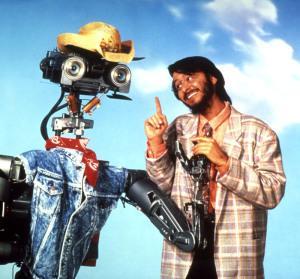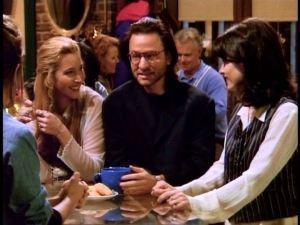If you simply know Aziz Anzari as Tom Haverford on Parks & Recreation and/or for any of his guest appearances on other comedies in which he usually plays a variation of Tom Haverford you might have been caught completely off guard when Anzari seemed to suddenly emerge as the angry voice of the Indian-American in Hollywood. It could almost seem like Anzari turned from lovable sitcom sidekick to Spike Lee overnight, instantly cutting through any niceties during a recent Late Show with Stephen Colbert appearance to bust the usually lovable host’s balls about the fact that he’s yet another white guy with a talk show who has employed a mostly white group of writers. However, it’s really more that Anzari and his Asian friend Alan Yang co-created the new Netflix comedy Master of None, and on the promotional trail he’s run into plenty of questions like “Hey, diversity is a hot button issue in Hollywood right now, and you’re someone of color who just co-ran his own show with another person of color and you deal with race on your show. Tell us about that experience.”
By Anzari’s own admission, he co-created Master of None as a starring vehicle for himself because he realized he couldn’t simply wait around for someone else in Hollywood to do it. By virtue of his ethnicity and body of work on Parks & Recreation and his standup comedy material, he was only being offered roles as cab drivers or doctors or funny side characters who yell a lot. No one was going to cast him as a romantic lead. No one was going to think he could actually pull off any real dramatic acting.

Some of that is the standard actor’s trap that so many, regardless of race or gender, have fallen into where they’ve become typecast based off of their most famous role. However, some of it is entirely down to the types of roles we give out to people who look like Aziz Anzari.
Yet Anzari getting offers to play Indian doctors or cab drivers is a sad sign of progress: At least casting directors are trying to cast someone with the right ethnicity to play the character. There was a time when we used to paint white people in brown make-up to make them look Indian, and it’s possibly more recent than you realize. I’m not talking about the Golden Age of Hollywood; I’m talking about the 80s.
In a recent New York Times essay, Aziz details a conversation he had with Fisher Stevens, who had been a hero to him as a child for his role in the first two Short Circuit movies until the ugly truth came out:
Here he is in Short Circuit 2:
 Johnny 5 is alive! And doling out some 80s era racism?
Johnny 5 is alive! And doling out some 80s era racism?
The first time I saw an Indian character in an American movie was “Short Circuit 2,” a 1988 film in which a humanized robot named Johnny 5 goes to New York and bonds with an Indian scientist named Benjamin Jarhvi.
Seeing an Indian character in a lead role had a powerful effect on me, but it was only as I got older that I realized what an anomaly it was. I rarely saw any Indians on TV or film, except for brief appearances as a cabdriver or a convenience store worker literally servicing white characters who were off to more interesting adventures. This made “Short Circuit 2” special. An Indian lead character? With a Caucasian love interest? In the 1980s? What’s going on here? A bold foray into diversity far ahead of its time?
Not exactly.
One day in college, I decided to go on the television and film website IMDB to see what happened to the Indian actor from “Short Circuit 2.” Turns out, the Indian guy was a white guy.
The character was played by Mr. Stevens, a Caucasian actor in brownface. Rather than cast an Indian actor, the filmmakers had Mr. Stevens sit every morning in a makeup chair and get painted an “Indian color” before going on set and doing his “Indian voice.”
I’m actually the same age as Aziz meaning Short Circuit 2 hit me right around the same point in my childhood as him. It must have been one of those movies HBO used to play all the time because I know that the last time I saw it was over two decades ago but I feel like I’ve still seen many, many times. I never actually IMDB’ed the movie the way Aziz did. I had no idea until reading his essay that the person in the movie was a white guy pretending to be an Indian. In fact, I saw Fisher Stevens in other things in the 90s, and never connected the dots:
Here he is in an early episode of Friends, playing Phoebe’s new psychiatrist boyfriend, Roger, who depresses and angers everyone.
 Aziz continued:
Aziz continued:
As a child, I thought the villain of the film was Oscar Baldwin, the banker who tricks Johnny 5 into helping him commit a jewel heist. As an adult, I thought the bad guy was actually Mr. Stevens, who mocked my ethnicity.
And now, here I was, a real Indian man, talking to the actor who played a fake one almost 30 years ago.
After a long conversation, I can confirm Mr. Stevens is not a villain, but was, when he took the role, a well-intentioned if slightly misguided young actor who needed a job during a more culturally insensitive time.
At first, he was remarkably casual, cooking dinner as we talked, seemingly happy to recall his days with Johnny 5.
“Originally, the role of Benjamin was a white grad student, and then the director and co-writer of ‘Short Circuit’ changed the character to Indian,” he told me. They then went to Mr. Stevens and asked, “Can you play Indian?”
It was 1987, so we were all a little less savvy about the things we were doing that were actually hurtful to large groups of people, and the answer, for a 21-year-old struggling actor, was yes.
What surprised me was how seriously Mr. Stevens dedicated himself to “becoming Indian.” He went full Method, studying with a dialect coach, reading R. K. Narayan’s “The Guide” and Hesse’s “Siddhartha.” “I started taking yoga and immersed myself, because I really wanted to be as real as possible,” he said. He even lived in India for a month before shooting “Short Circuit 2.”
Mr. Stevens’s efforts to make the character real, and not a full-on ethnic cartoon, are admirable, despite the underlying insult of his being cast. Toward the end of the conversation, it seemed to fully hit him how insensitive his casting may have been, and he said several times that he believed the role should have been played by an Indian and that he would never take it today.
It was a different time, and perhaps I’m in the minority of people who didn’t already know the truth behind Short Circuit 2. However, if you listen to Aziz he recognizes that things are improved, but thinks we could still do so much more. He cites The Social Network as an example of a movie with an Indian character played by someone of a different ethnicity, and The Martian as a case of a scripted Indian character having his name and ethnicity changed during the casting process. He also calls upon more white people in power in Hollywood to give more people of color a shot because if it wasn’t for show creator Michael Schur giving him a shot on Parks & Recreation he never would have been able to build up the skillset and industry connections to make Master of None. Maybe that’s why he was so quick to criticize Stephen Colbert, whose old conservative character on The Colbert Report was always proud to brag about his one black friend. That might not be too far from the truth considering the lily white and mostly male composition of The Late Show‘s writing staff.
Source: New York Times

